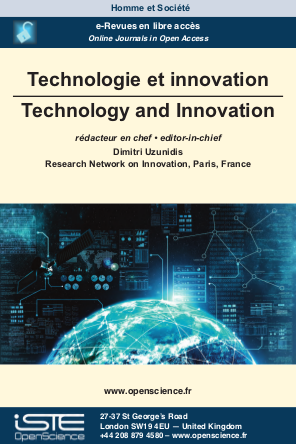

Engineering and Systems > Home > Technology and Innovation > Issue
Science fiction is an increasingly influential technical imaginary in laboratories and R&D centers. Engineers and scientists develop projects that seem to realize the most futuristic science fiction stories. Innovation and creativity are influenced by a technical imaginary, increasingly formatted to meet the requirements of companies wishing to offer consumers products dreamed up and imagined by science fiction writers. What is the influence of this imaginary on engineers, their training and their professional activity? Which sectors are most affected by this influence? Should we consider science fiction and design fiction as useful and positive practices or, on the contrary, as dangers for the ethics of R&D?
Contemporary challenges such as resource scarcity, climate change and population growth require fresh thinking about the strong link between technology and society, especially for engineers who are responsible for technical production. In this context, we argue that technical culture is a valuable means to question the meaning of technical objects we design and use. This paper suggests that science fiction is a perfect way to gain access to this culture. Some examples from our experience in a French engineering school will illustrate this.
Science fiction explores the areas that lie between science and myth, philosophy and faith, knowledge and dreams. If it draws on scientific rationality, it always does so under the veil of the imaginary. The purpose of our contribution is to deepen this journey from science to fiction through the anticipatory fiction movement in France in the second half of the last century and the example of Richard Bessière, the first and the most emblematic author of the "Anticipation" series. Focusing on two themes (economics and climate change), we analyze the direct or indirect links between two spaces of thought, one created by the author for his science fiction universe and the other that of the current scientific and technical community, by placing them in the perspective of the temporal gap that separates these two universes.
The objective of this article is to analyze the contradictions between our future vision about world development and a possible apocalyptic end, a subject of various science fiction movies. These contradictions seem to us due to the incompatibility between the presumed infinite innovations and finite resources of our planet. In spite of the infinite opportunities which technological innovations promise us, these narratives demonstrate their limits and their risks. These science fiction movies act as a real warning system, revealing the possible poisonous consequences of some technological innovation trends that could be fatal for humanity and its environment.
The increasing interest in “the new”, one of the main drivers of innovation, is today promoted and maintained by two professional groups, crystallized over time, that have never managed to remove a certain common area of uncertain identity – engineers and designers. We propose that “the new” is the object of the power, delimitation and identity construction of these two groups. The present study proposes to analyze the modes of visual expression used more or less consciously by engineers in their attempt to become more visible while remaining autonomous of designers and acquiring prestige in the eyes of the (modern) consumer as being the promoters of “the new”, of new technology, of science and of the new “magicians”.
Through the example of the infantryman, this article proposes methodological tools to exploit imaginaries from science fiction (film, manga, novel, comics, etc.) in a design approach. Based on a corpus of nearly 300 references, it shows that the imaginaries should be used in a differentiated way according to the medium that is considered and that it is possible to distinguish complementary context issues and use issues . The article discusses the different forms of strategic issues and compares the solutions proposed in these imaginaries with those taking place in the fields of the military industry. In conclusion, the article discusses issues concerning the circulation of imaginaries between cultural and military industries.
The conquest of Mars is an issue that goes beyond the scope of scientific curiosity. Although exploration is mainly produced and financed by the public sector, the deployment of manned missions with the aim of creating a Martian civilization could be provided by private actors. Science fiction was inspired by these discourses to propose an imaginary whose function is studied in this article. After examining the contribution of this genre to the elaboration of the speeches of the Mars Society and of the entrepreneur Elon Musk, this study questions the construction of ideological micro-discourses such as Marsism. This neologism refers to the passage from science fiction to technological ideologies, particularly influential in the dynamics of capitalism. Exploring the imaginary is important for stimulating R&D and for merging the interests and expectations of engineers, innovators and the public.

2025
Volume 25- 10
Issue 12024
Volume 24- 9
Issue 12023
Volume 23- 8
Issue 12022
Volume 22- 7
Issue 12021
Volume 21- 6
Issue 12020
Volume 20- 5
Issue 12019
Volume 19- 4
L’innovation agile2018
Volume 18- 3
Issue 42017
Volume 17- 2
Mobility Innovations. Transport, management of flows and territories2016
Volume 16- 1
Issue 1